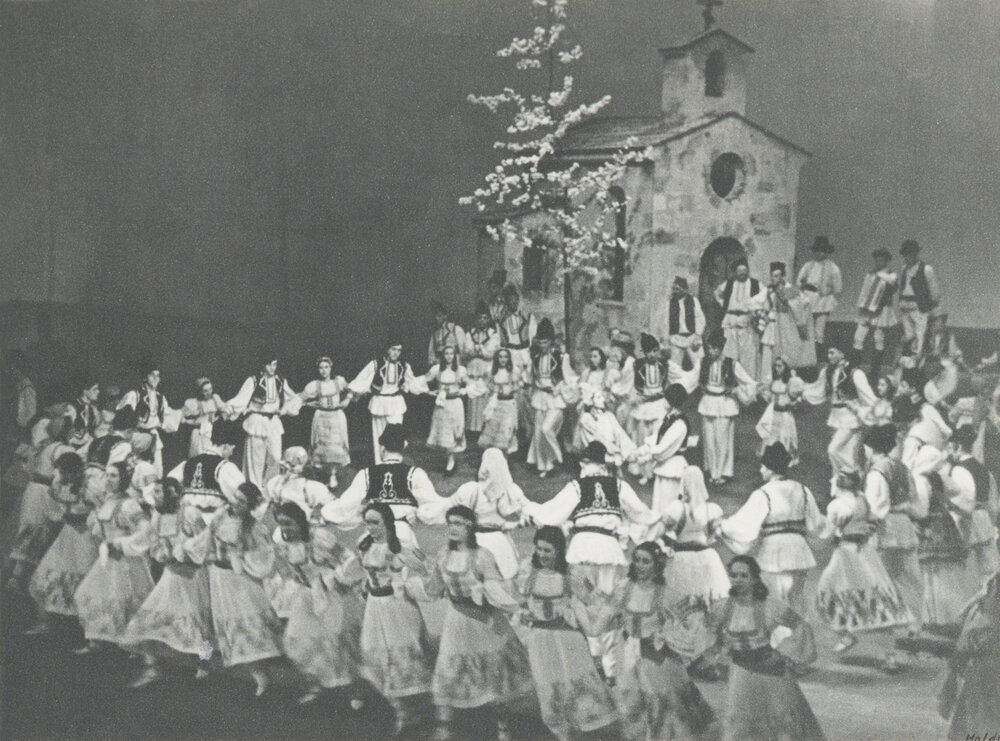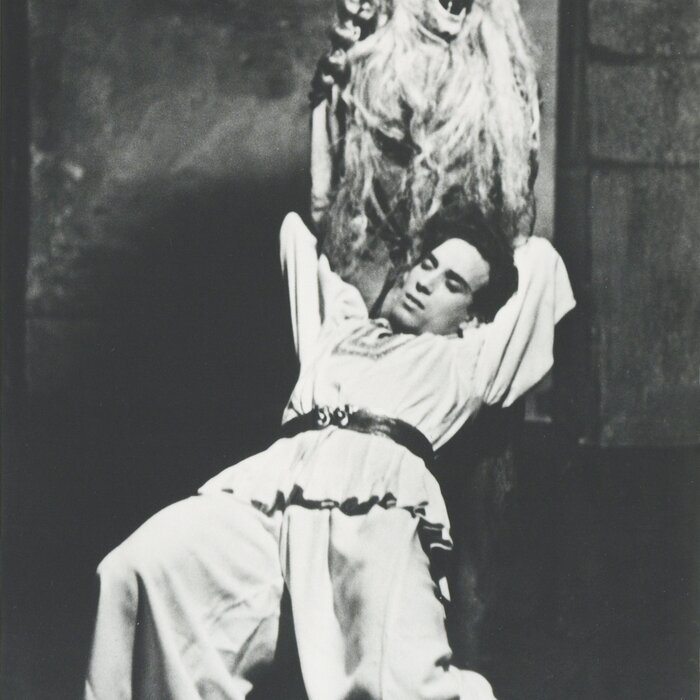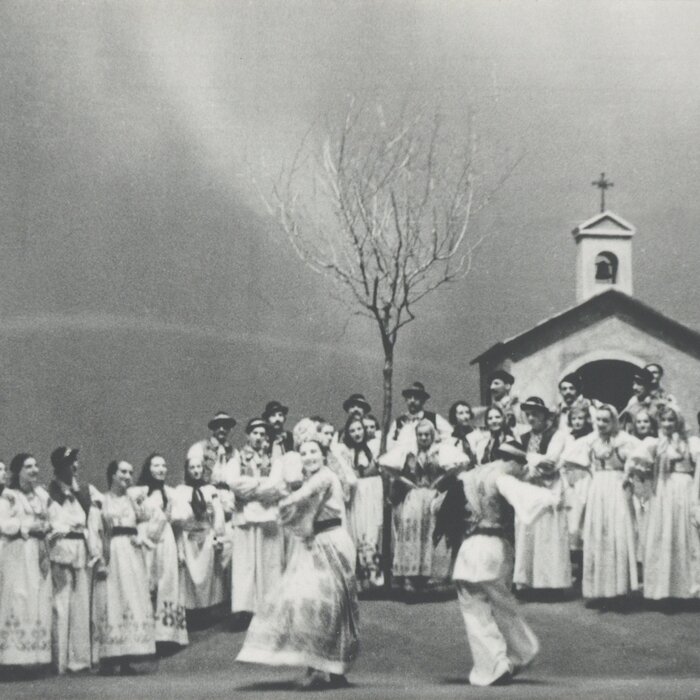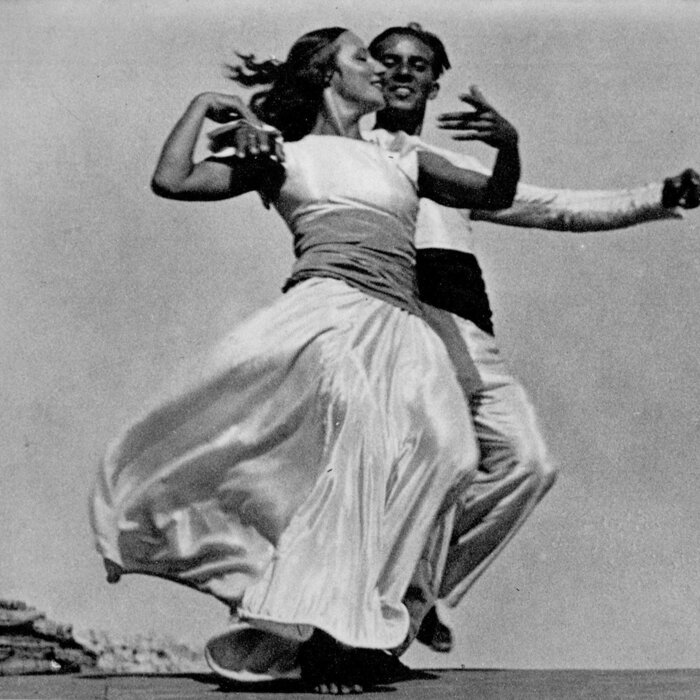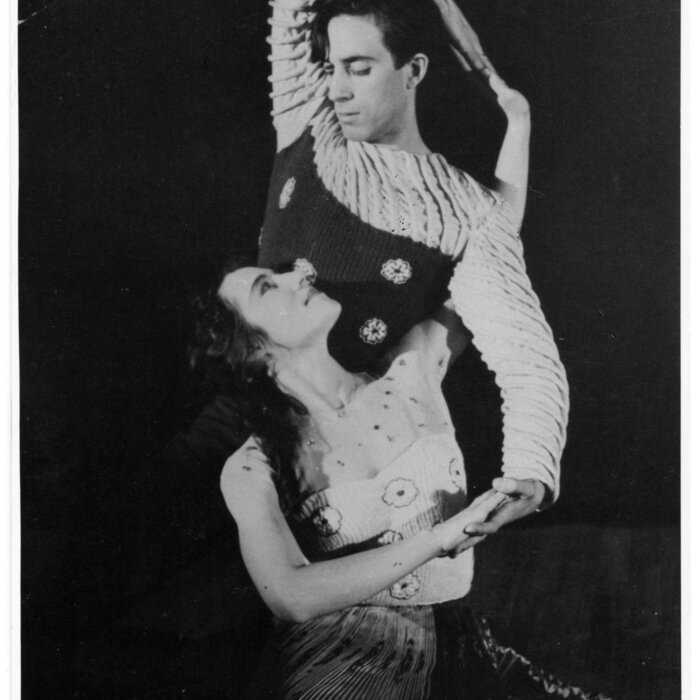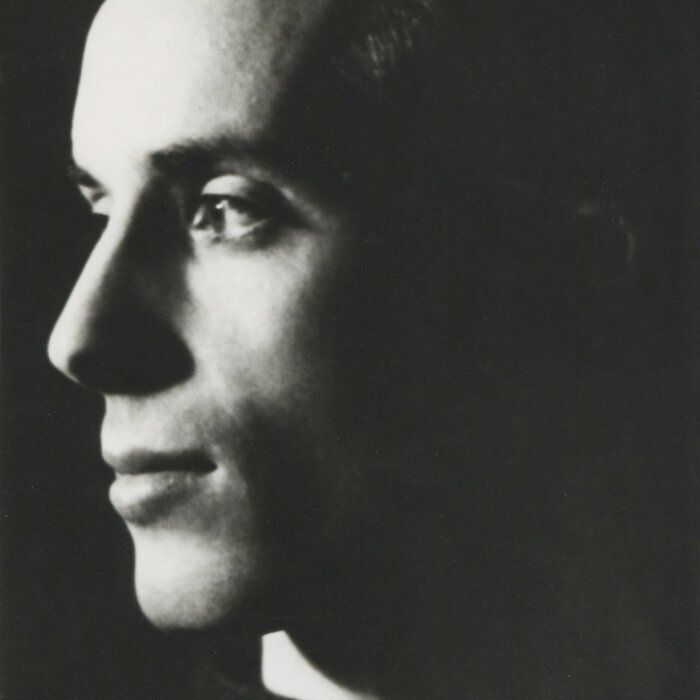All too often, ballet works are written in such a way that they mostly have only external content, a shell in which there is nothing but a shell, but which offer more or less inviting and effective choreographic possibilities, even if they have been used hundreds of times, but precisely for this reason to ballet masters and performers very convenient. But it is very difficult to get contractors for the right job, as well as the wrong one. /…/
The Devil In The Village is a dance piece that, despite its simplicity and commonness, is nevertheless unusual and means something new for the dance scene. Not only that it fulfills the entire evening in three acts, but also that it carries within itself some broad dramatic line that allows to show human destiny in the form of dance. A real and honest world of human emotions is being danced on the stage, and something is really happening on it. The same principle as in drama also applies to any ballet work. We have to follow the heroes on stage in their destinies and actions, from which the human psyche should gradually be revealed.
The Devil in the Village is an act of village poetry, but definitely a completely new expression of this folk poetry, because it speaks with the international language of dance movements and with its music. And that is precisely why this work becomes closer to the unexpected and civilized city man and is like a source of life's joy, rest and artistic pleasure.
Dancing is very widespread among our people. Even our cultured dance art draws its strength from this strong national spring. Therefore, it is precisely through dance and the art of dance, which is developing widely in our country and taking on realistic artistic forms, that the Slavs will certainly take a position in the circle of other cultural nations. Our old culture will find its expression among them through dance. (Pino Mlakar: On Dance, Programme Booklet of The Slovene National Theater Opera and Ballet Ljubljana, 1945/46, No.11 (1946), p. 123-125)
For the proper development of dance art in our theater, growth is firstly necessary, male and female youth are needed. /.../ Ballet evenings that would inspire and encourage young people are rare in number and poor in quality. Therefore, it is not surprising that there is a lack of dance growth. But where there is no growth, there is also no choice, no competition. In this case, no selection is possible, and development rises to mediocrity at most. Art only begins where mediocrity ends. [...]
Anyone who wants to become a dancer should apply in writing to the administration of the Slovenian National Theater in Ljubljana. (Pino Mlakar: On Dance, Programme Booklet of The Slovene National Theater Opera and Ballet Ljubljana, 1945/46, No.11 (1946), p. 123-125) str. 127)
The choreographic solution of The Devil in the Village has the following task in front of it: what should be the style of the ballet, whose script and music are based on a folk motif, and in the entire ballet there is only one single folk dance, the so-called j. the bike in the last picture. /.../ Choreography of the classical style [ballet] for the peasant world The devil in the village was out of the question; mere knowledge of folklore would be too weak a basis. The only solution was in the modern dance style, as this pays all attention to the expressive movement and rhythm of the human demon. This is precisely what is essential for this scenario, which avoids everything that is merely outwardly beautiful. The inner world of this peasant poetry had to find its visible and thus external expression; because this poetry speaks on stage through human gesture and dance. (Pia in Pino Mlakar: Since the first staging of The Devil In The Village, Programme Booklet of The Slovene National Theater Opera and Ballet Ljubljana, 1945/46, No.11 (1946) str. 130)
Since the first performance of The Devil in the Village, the Slovenian National Theater in Ljubljana has experienced a step forward in the development of ballet. However, it still does not have such a ballet company to be able to perform on its own. What we don't have today, we will be able to do tomorrow. The first step was followed by the second, and according to the reaction the performance will have, a third step will also follow: the creation of a capable, full-fledged ballet family, which would be technically and morally at such a height that it could one day become a real, solid dark stone in building of the Slovenian National Theatre.(Pia in Pino Mlakar: Since the first staging of The Devil In The Village, Programme Booklet of The Slovene National Theater Opera and Ballet Ljubljana, 1945/46, No.11 (1946) str. 130)
